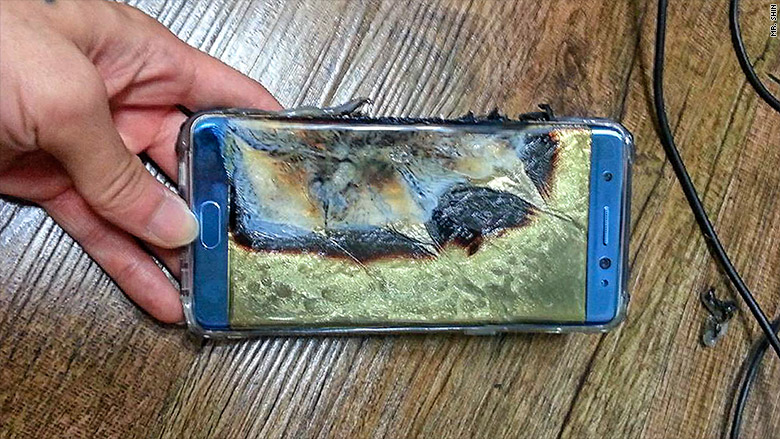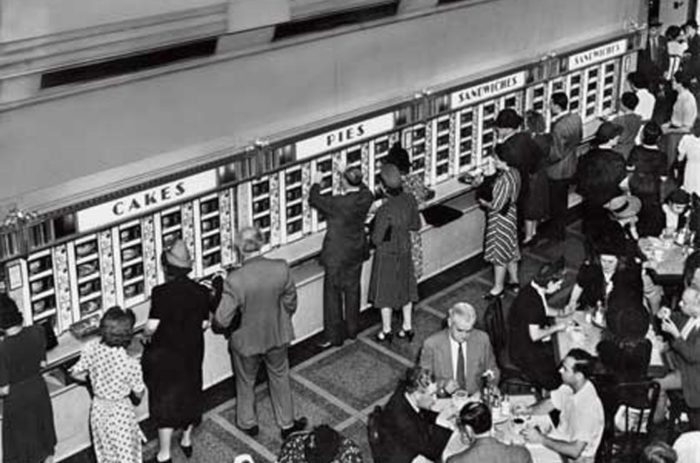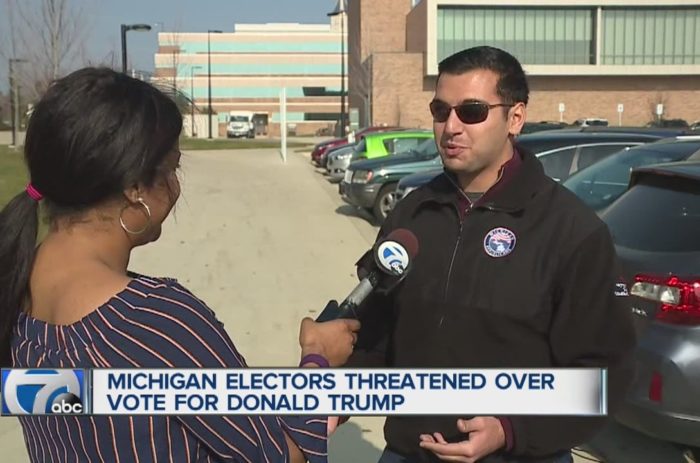
The following is an excerpt from OpinionJournal’s “Best of the Web” at The Wall Street Journal written by the editor, James Taranto.
ObamaCare Catches Fire
Outside of politics, perhaps the worst new-product launch of 2016 was the Samsung Galaxy Note 7. Released in August, it was recalled twice and finally withdrawn from the market last week, all because the device has a tendency to catch fire or explode.
It’s an apt analogy for the Patient Protection and Affordable Care Act, known colloquially as ObamaCare—and that’s not our opinion but that of President Obama himself. Here’s the president in a speech yesterday at Miami Dade College in Florida:
The point is, now is not the time to move backwards on health care reform. Now is the time to move forward. The problems that may have arisen from the Affordable Care Act is [sic] not because government is too involved in the process. The problem is, is that we have not reached everybody and pulled them in. And think about it. When one of these companies comes out with a new smartphone and it had a few bugs, what do they do? They fix it. They upgrade—unless it catches fire, and they just—then they pull it off the market. But you don’t go back to using a rotary phone. You don’t say, well, we’re repealing smartphones—we’re just going to do the dial-up thing. That’s not what you do.
It turns out ObamaCare compares unfavorably even by that analogy. Several years ago this columnist switched our TV and internet service to Verizon Fios, the fiber-optic service offered by the company whose local operation was long ago known as New York Telephone. Signing up for Fios, it turned out, also entailed giving up traditional copper-wire analog phone service in favor of the newfangled digital kind.
We hadn’t used a rotary phone since childhood, but we happen to own an antique one. This morning we plugged it into the wall and attempted to dial a number. It took a long time, as you have to dial 11 digits now even for a local call—but it worked. If you like your phone, you can keep your phone (save for the Note 7). Verizon 1, ObamaCare 0.
The president’s ObamaCare apologia is classic Obama, filled with self-serving fiction and fallacy. “Change does not typically come from the top down, it always comes from the bottom up,” he asserts:
The Affordable Care Act was passed because the American people mobilized, not just to get me elected, but to keep the pressure on me to actually do something about health care and to put pressure on members of Congress to do something about it.
He claims to have “worked really, really hard to engage Republicans. . . . And when they just refused to do anything, we said, all right, we’re going to have to do it with Democrats. And that’s what we did.” In reality, public resistance to ObamaCare was far broader and more intense than support for it, as evidenced by the Democratic rout in the 2010 elections.
“Before this law, before ObamaCare, health insurance rates for everybody—whether you got your insurance on the job, or you were buying it on your own—health insurance rates generally were going up really fast,” he asserts:
This law has actually slowed down the pace of health-care inflation. So, every year premiums have gone up, but they’ve gone up the slowest in 50 years since ObamaCare was passed. In fact, if your family gets insurance through your job, your family is paying, on average, about $3,600 less per year than you would be if the cost trends that had existed before the law were passed had continued. Think about that. That’s money in your pocket.
This is post hoc ergo propter hoc reasoning; he doesn’t make the case the “cost trends” would have continued absent the law. And in any case you’re paying more in other ways and getting less in return, but somehow that’s somebody else’s fault:
Now, some people may say, well, I’ve seen my copays go up, or my networks have changed. But these are decisions that are made by your employers. It’s not because of ObamaCare. They’re not determined by the Affordable Care Act.
He also boasts that for people with employer coverage, ObamaCare “has not affected your coverage—except to make it stronger”:
Because of the law, you now have free preventive care. Insurance companies have to offer that in whatever policy they sell. Because of the law, you now have free checkups for women. Because of the law, you get free mammograms. Because of the law, it is harder for insurance companies to discriminate against you because you’re a woman when you get health insurance.
In reality, of course, none of this stuff is free; you’re just paying for it through higher premiums and copays and diminished options.
ObamaCare had a far more disruptive effect on the individual medical-insurance market, which the president naturally downplays:
Most people today can find a plan for less than $75 a month at the HealthCare.gov marketplace when you include the tax credits that government is giving you. That means it’s less than your cellphone bill—because I know you guys are tweeting a lot—and texting and selfies. And the good news is, is that most people who end up buying their coverage through the marketplaces, using these tax credits, are satisfied with their plans.
So not only did Obamacare do a lot of good for the 80-plus percent of Americans who already had health care, but now it gave a new affordable option to a lot of folks who never had options before. All told, about another 10% of the country now have coverage.
Another way of saying “tax credits that government is giving you” is “subsidies that taxpayers are paying for.” And after all this, as the Weekly Standard’s Jeffrey Anderson points out, a smaller percentage of the under-65 population had private health insurance in 2015 (65.6%) than in 2007 (66.8%).
It’s a bit more complicated than that, Centers for Disease Control data (Table 1.2b) show. The figure dropped notably between 2008 (65.4%) and 2009 (62.9%), presumably as a result of the recession. It bottomed out at 61.0% in 2012 and 2013 and rose by a total of 4.6 percentage points in the first two years of the ObamaCare marketplaces. Anderson:
Meanwhile, the CDC figures show that the percentage of people living in the United States who have public health coverage has risen dramatically, from 18.1 percent in 2007 to 25.3 percent in 2015 (see table 1.2a). If that percentage had stayed the same as in 2007, 23 million fewer people would now have public health coverage. In other words, Obamacare is a massive Medicaid expansion.
Fixing ObamaCare, the president asserts, is simple, “but only if we”—meaning his opponents—“put aside all the politics [sic in transcript] rhetoric, all the partisanship, and just be honest about what’s working, what needs fixing and how we fix it”:
And I promise, if Republicans have good ideas to provide more coverage for folks like Amanda, I will be all for it. I don’t care whose idea it is, I just want it to work. They can even change the name of the law to ReaganCare. Or they can call it Paul Ryan Care. I don’t care—about credit, I just want it to work because I care about the American people and making sure they’ve got health insurance.
Oh Lord it’s hard to be humble when you’re perfect in every way. But it’s no coincidence that the reforms he endorses—still more Medicaid, and a “public plan fallback” (a k a the public option, i.e., a government-owned insurance company)—are all left-liberal ideas.
At this point, it doesn’t much matter what Obama wants, as he’ll officially be a lame duck in another 2½ weeks. In the unlikely event that Donald Trump is elected, “RyanCare” might have a chance of getting through. In the likely event that Hillary Clinton wins the White House while Republicans hold at least one house of Congress, perhaps there will be some room for actual compromise—though that would also mean Republicans would bear some responsibility for the failures of whatever new system emerges.
On the other hand, Obama seems unlikely to opt for a dignified, low-key postpresidency à la George W. Bush and his father. We’ll probably be hearing a lot from him in the decades to come. By 2050 he’ll be just 89, younger than Jimmy Carter is today.
For more “Best of the Web” from The Wall Street Journal’s James Taranto click here.



